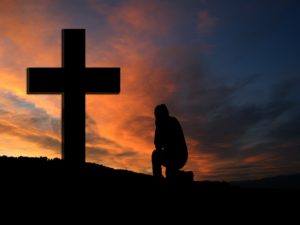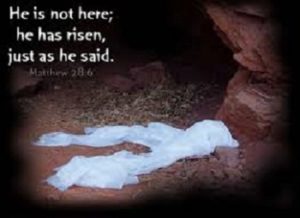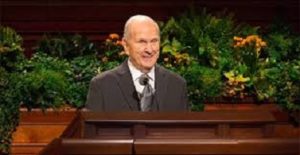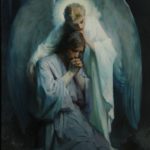
The weekend of March 30-April 1 2018 was an important one for Christians. It was Easter weekend and the atoning suffering, death, and resurrection of the Son of God was marked around the globe in the different traditions of the Christian Church.
Good Friday is so called because of the medieval understanding of the word ‘good’ as meaning ‘holy, pious,’ with the sense of a day or season regarded as holy, or set apart, by the church. Easter Saturday marks the day the body lay in the tomb, traditionally a time when all signs of celebration are set aside, the bright colours that traditionally mark the church year in many churches are muted for the remembrance of the Lord of Life.
In the Roman Catholic Church Good Friday is regarded as a day of fasting that involves the liturgy of the word, the veneration of the cross, and communion. In the United Kingdom it has traditionally been a day when businesses have closed, horse racing has stopped, sports programmes put on hold, though these observations have fallen by the way in recent years.
In the Byzantine Church tradition this period of reflection on the cross begins on Thursday night with twelve readings from the gospels that take us from Jesus’ last sermon to his agony in the garden in the ‘farewell discourse’ of John 13:31-18:1.Then readings from all four gospels take us to the time a guard was set on the tomb.
You can read here about the different traditions of the Christian church practised and observed over this weekend, a tradition of remembering and passing on, ‘the glorious deeds of the LORD, and his might, and the wonders he has done.’ (Ps.78: 4, passim)

Easter Sunday then becomes a day of great celebration, as we move with those first Christians from despair to marvellous triumph and hope. Many around the world hold dawn vigils and, as the sun rises, call and answer, ‘Hallelujah! He is risen!’ ‘He is risen indeed!’ Celebration follows as the church remembers the great good news that broke on the world that first Easter Sunday morning. An empty tomb, a risen Lord, eternal life for all who put their trust in him.
How was your Easter?
Meanwhile, Back in Utah
The Mormon Church held it’s annual General Conference over that weekend, a strikingly unusual scheduling. Following the death of 90-year-old Thomas S Monson on 2 January 2018 the church has a new prophet in 93-year-old Russell M Nelson. He is only the second Mormon president, after Monson, to have been born after the 1st World War, Monson having been born August 1927 and Nelson September 1924.
Before Monson the man at the helm was Gordon B Hinckley, born 1910.
Although this process, rather pretentiously known as a ‘solemn assembly,’ has the appearance of a consultation with congregations around the world, as Richard Ostling, in his Get Religion article points out:
‘There was no choice of other names and conference attendees always affirm a new president without dissent. Moreover, Nelson’s colleagues had already installed him weeks beforehand. Beyond that, Nelson’s ascent was predestined years beforehand because the new LDS president is automatically the man with the earliest appointment to the Quorum of the Twelve Apostles.’
If you think you were witnessing a form of Congregationalism think again.
When we look at previous Mormon presidents it is remarkable that a church founded in 1830 by a disreputable 24-year-old gold digger from up-state New York should be led by men of such great age.
Joseph Smith’s immediate successor (in the Salt Lake City Church at least), Brigham Young, was a vigorous 42-year-old when he took up the reins of leadership, becoming ‘the American Moses,’ leading the saints across the plains to the Salt Lake Valley. Any number of candidates for the role sprung up and many splinter groups issued from the ensuing confusion but Brigham got the job. It was in the battle for leadership following Joseph’s death that the rules of succession were set.
While the Re-organised Church, now the Community of Christ, understood succession as going to Joseph’s immediate blood heir, Joseph Smith III, Brigham Young insisted that leadership fell to the relatively newly formed Quorum of the Twelve Apostles, of which he was president.
Young’s actions later, in 1875, came to define the great age of the president of the church when he decreed the rule of seniority: the senior member was to be the person with the longest uninterrupted service in the Quorum.
As Gordon B Hinckley once quipped, you become president by outliving everyone else.
A helpful explanation of how the church chooses it’s next president appeared in the Deseret News shortly after Monson’s death.
After Brigham’s death in 1877, at the age of 77, his successors routinely became hoary, anachronistic characters whose leadership styles were increasingly out of touch with the needs of the times.
Change has, inevitably, come, but kicking and screaming rather than quietly and confidently embraced as the top leadership of the church cling to the customs and mores of bygone days. A list of their names and ages on becoming president can be found here.
A church led by men who began to learn their leadership skills and form their world-view around the time Edward VIII abdicated the English throne, the Depression was lingering on it’s death bed, the BBC made it’s first public broadcasts, and one Devon housewife apparently could feed her family of nine for £1.
Old school conservatism might be expected, then, to mark this Mormon leadership, tradition to shape the procedures of this Easter weekend, as the gathered, regarding themselves as the ‘only true Christian Church in this last dispensation,’ hang on the words of a living prophet. So, what does a 93-year-old retired heart surgeon have to say to the one true church and the world on this solemnly significant Christian occasion?
A Prophet Speaks

Mormonism’s new prophet, Russell M Nelson, God’s mouthpiece on earth, spoke five times during the weekend. He first spoke a few opening remarks during the Saturday evening general priesthood session and announced important changes to the way elders’ and high priests’ quorums would operate: ‘In each ward, the high priests and the elders will now be combined into one elders quorum.’
Elder D. Todd Christofferson and Elder Ronald A. Rasband of the Quorum of the Twelve Apostles then proceeded to explain in more detail the reasons for and significance of these changes.
Russell M Nelson closed the priesthood session by sharing his concern about some priesthood holders who don’t exercise their priesthood correctly because they don’t understand what the priesthood is.
He next spoke in the Sunday morning session, in which the new prophet made what can only be described as a ‘goes without saying’ reference to the atonement before going on to laud his predecessor, Thomas S Monson, speak at length about his own history in the church and the reality of modern revelation, ending with an insight into his own approach to leadership.
He was clearly laying down markers, leaving listeners in no doubt that he was inspired by God and, if they prayed about it, they would know it too. This is Moroni’s promise, with all it’s mind manipulation (did you pray with a sincere heart?) brought to bear in support of the new prophet.
In a 2282 word address he dedicated 290 words (10%) exclusively to the thing that Christians would be celebrating, talking about, preaching about that morning, around the world, the events of that first Easter.
It was in the Sunday afternoon session that he rose again to announce the ‘retiring’ of the long-established Home Teaching programme of the church, replacing it with something called ‘Ministering.’ At the time of writing a sparsely populated (but ‘coming soon’) section of the LDS website is given over to explaining the Ministering programme. Meanwhile, a FAQ section on lds.org can be found here.
This is a man who heads up The Church of Jesus Christ of Latter-day Saints (‘of course we’re Christians, his name is in the name of our church!’); a man who claims to speak for the God of the Bible (‘we believe the Bible to be the word of God as far as it is translated correctly’; LDS 8th article of faith); someone entrusted above all else with delivering the Christian message to a dying world and his concern is that you should know:
‘Through personal revelation, you can receive your own witness that the Book of Mormon is the word of God, that Joseph Smith is a prophet, and that this is the Lord’s Church.’
Russell M Nelson closed the conference with a call to arms:
‘I exhort you to study the messages of this conference frequently—even repeatedly—during the next six months. Conscientiously look for ways to incorporate these messages in your family home evenings, your gospel teaching, your conversations with family and friends, and even your discussions with those not of our faith. Many good people will respond to the truths taught in this conference when offered in love. And your desire to obey will be enhanced as you remember and reflect upon what you have felt these past two days.’
So, what are the messages to be taken away from this conference, studied, discussed, incorporated, and obeyed? Let’s look at a sampling.
Saturday morning
M Russell Ballard urged:
The Lord has said:
“Thou shalt give heed unto all his [meaning the President of the Church] words and commandments which he shall give unto you as he receiveth them …; “For his word ye shall receive, as if from mine own mouth, in all patience and faith.” (D&C 21:4-5)
Brian K Taylor of the Seventy, spoke of the Mormon doctrine that we are all literal offspring of our Heavenly Father:
‘President Boyd K. Packer’s words are plain and precious: You are a child of God. He is the father of your spirit. Spiritually you are of noble birth, the offspring of the King of Heaven. Fix that truth in your mind and hold to it. However many generations in your mortal ancestry, no matter what race or people you represent, the pedigree of your spirit can be written on a single line. You are a child of God!”
He illustrated the nature of that relationship in the lives of two ‘sons of God’ before launching into the story of Joseph Smith and the so-called first vision:
‘As Jesus earnestly sought His Father in Gethsemane, so young Joseph Smith, in 1820, prayerfully sought God in the Sacred Grove. After reading “If any of you lack wisdom, let him ask of God,” Joseph retired to pray.’
I’ll just leave that there for you to consider the appropriateness, or otherwise, of such an illustration and comparison.
Larry J. Echo Hawk Of the Seventy, anticipating the empty tomb, preached a moving personal message on forgiveness, nevertheless reminding saints there is so much more to do:
‘Through the miracle of the sacred Atonement of Jesus Christ, we can also receive the gift of forgiveness of our sins and misdeeds, if we accept the opportunity and responsibility of repentance. And by receiving necessary ordinances, keeping covenants, and obeying commandments, we can gain eternal life and exaltation.’
Mormonism is rolled out with it’s ‘necessary ordinances, keeping covenants, obeying commandments’ as a prerequisite for gaining what Jesus’ sacrifice at Easter makes freely available to all who believe (John 3:16)
Gary E Stevenson spoke of the process of setting apart a new prophet, lauding the new man and saying:
‘Brothers and sisters, we can rejoice—even shout, “Hosanna!”—that the Lord’s mouthpiece, a prophet of God, is in place and that the Lord is pleased that His work is being done in the way that He has divinely prescribed.’
‘Hosanna’ this Easter weekend for…?
Lynn G Robbins preached a message of try until you succeed this Easter weekend, Jesus dying to give us ‘chances’ to successfully make it to heaven:
‘No one is more on our side than the Savior. He allows us to take and keep retaking His exams…Knowing that the strait and narrow path would be strewn with trials and that failures would be a daily occurrence for us, the Savior paid an infinite price to give us as many chances as it would take to successfully pass our mortal probation.’
Neil L Anderson ended his panegyric of the new man with:
‘In a future day, looking back on our mortality, we will rejoice that we walked the earth at the time of a living prophet. At that day, I pray that we will be able to say: We listened to him. We believed him. We studied his words with patience and faith. We prayed for him. We stood by him. We were humble enough to follow him. We loved him.’
And so it continues, through anecdotes of ‘sweet sisters,’ and ‘faithful brethren,’ General Authorities quoting other General Authorities, Joseph Smith, Book of Mormon characters.
We hear of the importance of, endurance, character, young people in the church, covenant keeping, the power of the priesthood, saving ordinances, family history and temple work, personal revelation (pops up a lot), relief work, discipleship, and not forgetting, ‘follow the prophet.’
These are, many though not all of them, good and commendable in themselves, but when Jesus and the season is mentioned they seem little more than a jumping off point for another anecdote, one more panegyric about the new prophet, or fond reminiscence of the old, while the Christian world kneels dumbfounded, awed, humbled, and grateful at the foot of the cross and the site of an empty tomb.
I have written in the past of the Crossless Easter of Mormonism and of the Mormon attitude to the cross and nothing seems to have changed. There will, of course, be those who will insist I am being petty and picking my evidence carefully, insist there was ample Easter in this conference.
If you want to know what a prophetic Easter sermon is like follow this link and hear the Easter story spoken into the lives of those privileged to hear it. Hear a challenge from the very foot of the cross, from the entrance to an empty tomb, and judge for yourself the difference.
If you’re still not seeing it let me point out it is often in small ways that these things become shockingly apparent. The conversations of ordinary Mormons are often the most reliable witness to how Mormons really see these things.
Some years ago a Mormon I knew online was sent a CD of Christian worship music by an Evangelical friend. When he was asked what he thought of it he replied he had really enjoyed it, as had his family, his little girl even dancing to the music. ‘One thing struck me though.’ he said. ‘You do make a lot of Jesus.’
Behold the Man!
Indeed, behold Dieter Uchtdorf, Mormon apostle, former member of the first presidency, now back in the ranks of the second quorum of the church. At almost the last minute he comes, during that Sunday afternoon session, to save the Mormon Church from itself and preach about Easter.
Of course, he gets it wrong and we’ll come to that, but we can see perhaps why he is no longer a comfortable fit in the first presidency of the church
The impression I get from the new man is that he wants to stamp his authority on the church and bring it back to what is important; Joseph Smith, the Book of Mormon, revelation, and ‘follow the prophet.’ Uchtdorf, conversely, almost sounds orthodox, in tone and delivery, if not in content. Perhaps it’s his European heritage. But behold Dieter Uchtdorf:
‘Yes, there are many events throughout history that have profoundly affected the destiny of nations and peoples. But combine them all, and they cannot begin to compare to the importance of what happened on that first Easter morning.’
Preach it brother!
‘My beloved brothers and sisters, I testify that the most important day in the history of mankind was the day when Jesus Christ, the living Son of God, won the victory over death and sin for all of God’s children. And the most important day in your life and mine is the day when we learn to “behold the man”; when we see Him for who He truly is; when we partake with all our heart and mind of His atoning power; when with renewed enthusiasm and strength, we commit to follow Him.’
Preach it brother, preach it!
‘To find the most important day in history, we must go back to that evening almost 2,000 years ago in the Garden of Gethsemane when Jesus Christ knelt in intense prayer and offered Himself as a ransom for our sins. It was during this great and infinite sacrifice of unparalleled suffering in both body and spirit that Jesus Christ, even God, bled at every pore. Out of perfect love, He gave all that we might receive all. His supernal sacrifice, difficult to comprehend, to be felt only with all our heart and mind, reminds us of the universal debt of gratitude we owe Christ for His divine gift.
‘Later that night, Jesus was brought before religious and political authorities who mocked Him, beat Him, and sentenced Him to a shameful death. He hung in agony upon the cross until, finally, “it [was] finished.” His lifeless body was laid in a borrowed tomb. And then, on the morning of the third day, Jesus Christ, the Son of Almighty God, emerged from the tomb as a glorious, resurrected being of splendor, light, and majesty.’
Yes, Gethsemane. ‘It was during this great and infinite sacrifice of unparalleled suffering in both body and spirit that Jesus Christ, even God, bled at every pore.’
Incredible as it may sound, it has long been believed and taught in the Mormon Church that Jesus atoned in Gethsemane and simply died on the cross.
Mormon Church president Joseph Fielding Smith said:
‘We get into the habit of thinking, I suppose, that his great suffering was when he was nailed to the cross by his hands and his feet and was left there to suffer until he died. As excruciating as that was, that was not the greatest suffering he had to undergo…so great was his suffering before he ever went to the cross…blood oozed from the pores of his body.’ (D&C Institute Student Manual, 1981, p.38)
Mormon apostle Bruce R. McConkie wrote:
“As He came out of the Garden, delivering himself voluntarily into the hands of wicked men, the victory had been won. There remained yet the shame and the pain of his arrest, his trials, and his cross. But all these were overshadowed by the agonies and sufferings in Gethsemane. It was on the cross that he ‘suffered death in the flesh’, even as many have suffered agonising deaths, but it was in Gethsemane that ‘he suffered the pain of all men, that all men might repent and come to him.’” (The Mortal Messiah, McConkie, pp 127-28)
Mormon apostle Jeffery R Holland declared,
‘It was here in the Garden of Gethsemane. on that last night of mortality, that Jesus left His Apostles and descended alone into the depth of agony that would be his atoning sacrifice for the sins of the world.’ (Ensign, April 2002, p.14)
If you want to unpack that then follow the link to Mormonism’s Crossless Easter where I explain it, it’s significance, and implications.
The New Testament apostle Paul wrote:
‘Jews demand signs and Greeks seek wisdom, but we preach Christ crucified, a stumbling block to the Jews and folly to Greeks, but to those who are called, both Jews and Greeks, Christ the power of God and the wisdom of God.’ (1 Cor.1:22-24)
There is something about the cross of Christ that causes many to despise it’s plain and brutal message, to recoil from it’s urgent call to humbly kneel and repent. At the cross we are found out and, with Paul, must confess, There is no one righteous, no not [me.]’ (Ro.3:10) Here we face our own hopelessness and cry with Paul, ‘Wretched [sinner] that I am! Who will delver me from this body of death?’ (Ro.8:24) It was Bishop J C Ryle who said:
‘We must give up the vain idea that we can ever make the cross of Christ acceptable by polishing and varnishing and painting and gilding it, and sawing off the corners.’

In the Garden
For the Mormon the cross is simply the unseemly instrument of Jesus’ death. The Garden seems perhaps more civilised, where Jesus is imagined taking on suffering attended by heaven, while on the cross, abandoned, suffering is inflicted, ignominious, brutal, final. Yet Paul preached nothing but the cross, while Jesus declared:
‘As Moses lifted up the serpent in the wilderness, so must the Son of Man be lifted up, that whoever believes in him may have eternal life.’ (John 3:14)
Our salvation depends on where, as well as to whom, we look for it, not ordinances and covenants, priesthood and temples, but Golgotha.
The whole conference was, more than usual, strikingly self-congratulatory, perhaps more noticeably so because it was an Easter weekend and Christians know where our minds need to be over those three days.
In his remarks at the start of this conference, M Russell Ballard said:
‘We should remember that it is [Jesus’] name that appears on our places of worship; we are baptized in His name; and we are confirmed, ordained, endowed, and sealed in marriage in His name. We partake of the sacrament and promise to take upon ourselves His name—and become true Christians. Finally, we are asked in the sacrament prayer to “always remember him.” ‘
Typically, it is necessary to wave Mormonism’s Christian credentials because so much of the Mormon faith fails doctrinally to bring Christian truth. They are left to present the flimsiest evidence, insisting they use his name of all things. They did use his name over this weekend, yet plenty of people in this world use his name, but I am reminded of Jesus’ own words:
‘Not everyone who says to me, ‘Lord, Lord,’ will enter the kingdom of heaven, but the one who does the will of my Father who is in heaven. On that day many will say to me, ‘Lord, did we not prophesy in your name, and cast out demons in your name, and do many mighty works in your name?’ And then I will declare to them, ‘i never knew you; depart from me, you workers of lawlessness.” (Mt.7:21-23)
How was your Easter?

